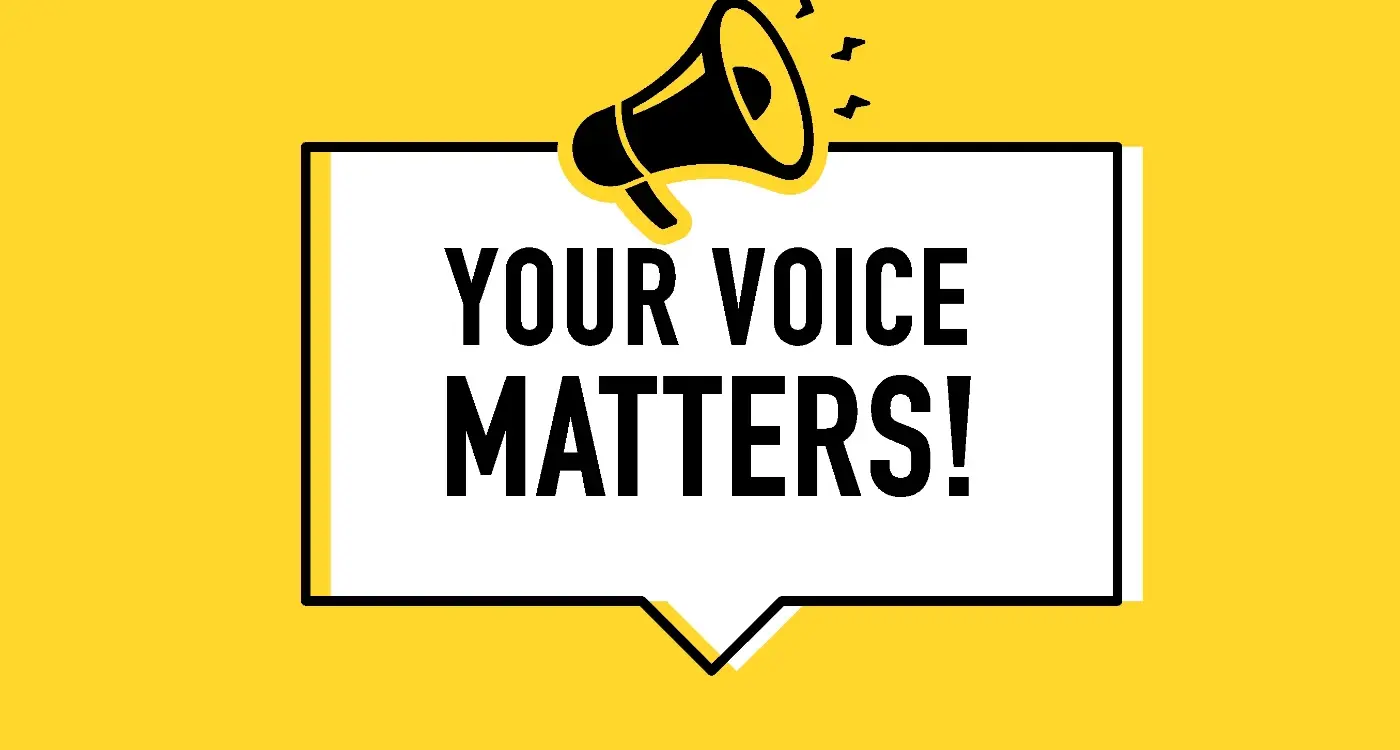How Do I Handle User Feedback for My Mobile App?
Launching a mobile app is just the beginning of your journey. Once your creation is out in the world, you'll start receiving all sorts of feedback from your users - and handling this feedback effectively can make or break your app's success.
As app developers who've been in the trenches for over eight years, we've seen how proper feedback management can transform an average app into something truly remarkable. It's like tending to a garden - your users are telling you exactly what needs pruning, watering, or complete replanting.
The most successful apps aren't just built by developers - they're co-created through an ongoing dialogue between creators and users.
Why Feedback Matters More Than Ever
Remember when mobile apps were a novelty and users would tolerate the occasional hiccup? Those days are long gone. Today's users are sophisticated, demanding, and spoilt for choice. They expect their voices to be heard and their suggestions to be taken seriously.
Whether you're managing your first app or your fifteenth, handling user feedback might feel overwhelming. You might be wondering how to collect it efficiently, what to do with criticism, or how to prioritise conflicting suggestions. Don't worry - we've been there too, and we're here to help you navigate these waters.
In this comprehensive guide, we'll walk you through everything you need to know about handling user feedback effectively. From setting up the right channels to turning feedback into meaningful improvements, we'll cover practical strategies that you can implement straight away. Think of this guide as your feedback handling compass - helping you chart the right course for your app's evolution.
Understanding User Feedback Types
When you're running a mobile app, user feedback comes in all shapes and sizes - rather like a box of Quality Street chocolates! Understanding these different types of feedback helps you make better sense of what your users are trying to tell you.
Direct Feedback
The most straightforward type is direct feedback, where users explicitly tell you what they think. This includes app store reviews, support tickets, and in-app feedback forms. It's like having a face-to-face chat with your users, giving you clear insights into their thoughts and feelings. Some users might love your latest feature, whilst others might point out bugs or suggest improvements.
Behavioural Feedback
Then there's behavioural feedback, which is more subtle but equally valuable. This includes usage patterns, analytics data, and user interactions within your app. Think of it as watching how people navigate around a shop - where they spend time, which aisles they avoid, and what makes them leave without buying anything. For example, if users consistently abandon your app at a particular screen, that's valuable feedback even though no words were spoken.
At Glance, we've learned that the most insightful feedback often comes from combining both types. Remember when Instagram changed its feed to non-chronological? Users expressed their displeasure directly through complaints, but it was the behavioural data showing reduced engagement that really told the full story. Understanding these different feedback types helps you build a complete picture of your users' experiences and needs.
Setting Up Feedback Channels
Setting up the right feedback channels for your mobile app is a bit like creating a welcoming front door to your home - you want to make it easy for people to come in and share their thoughts. After working with hundreds of app owners, we've seen how proper feedback channels can make the difference between an app that evolves with its users and one that stays stuck in its ways.
Essential Feedback Channels
Think of feedback channels as different paths your users can take to reach you. The most effective approach is to offer multiple options - rather like providing both a doorbell and a letterbox. In-app feedback forms, email support, social media channels, and community forums each serve different types of users and feedback styles. Remember how frustrating it is when you can't find a way to contact a company? That's exactly what we're trying to avoid.
Strategic Channel Placement
The placement of your feedback channels is crucial - they should be visible without being intrusive. Think about where your users might need help or want to share their thoughts. Perhaps it's after completing a key action, or when they've spent a certain amount of time in the app. It's similar to how shops often place their customer service desk in an easily spotted location - not hidden away in a corner.
One often-overlooked aspect is ensuring your feedback channels work offline. There's nothing more frustrating than trying to report an issue when you've lost internet connection, only to find you can't access the feedback form. Consider implementing a system that stores feedback locally and syncs when connection returns - rather like how WhatsApp handles messages when you're offline.
Creating User-Friendly Feedback Forms
Getting users to share their thoughts about your app is a bit like inviting friends over for dinner - you want to make them feel comfortable and welcome. When creating feedback forms, the key is to keep things simple and straightforward, just like having a friendly chat.
Think about the last time you abandoned a feedback form because it was too long or confusing. Frustrating, wasn't it? That's exactly what we want to avoid. The best feedback forms are short, sweet, and to the point.
The perfect feedback form is like a good conversation - it should flow naturally and never feel like an interrogation.
Essential Elements of User-Friendly Forms
Start with the basics: keep your questions clear and limit them to 5-7 at most. Include a mix of rating scales (1-5 stars work brilliantly) and open text fields where users can express themselves freely. Remember to make the form mobile-friendly - nobody enjoys pinching and zooming just to tick a box!
Making It Worth Their Time
Consider offering a small incentive for completing the form, like a premium feature trial or an in-app reward. But here's the crucial bit: always end with a thank you message that makes users feel their input is genuinely valued. You might say something like, "Thanks for helping us make the app better for everyone!"
Remember to test your feedback form thoroughly before launching it. Just as you wouldn't serve dinner without tasting it first, make sure everything works smoothly. If you find yourself getting tired while testing it, chances are your users will feel the same way.
Managing App Store Reviews
Let's face it - seeing a negative app review can feel like a punch to the gut, especially when you've poured your heart and soul into your mobile app. But don't worry; we've helped hundreds of app owners navigate these choppy waters, and we're here to share what really works.
The Art of Review Management
Think of app store reviews as your digital shopfront - they're often the first thing potential users see. The key is to respond thoughtfully to every review, whether it's a glowing five-star rating or a frustrated one-star complaint. Just like you wouldn't ignore a customer in a physical shop, each review deserves acknowledgement.
Turning Critics into Champions
Here's a little secret we've learned over our years in app development: some of your most valuable feedback can come from your harshest critics. When responding to negative reviews, start with a genuine thank you - it's disarming and shows you value their input. Then, acknowledge their specific issue (nobody likes a copy-paste response), and provide clear next steps or solutions.
Remember that brilliant response you wish you'd given hours after a difficult conversation? With app store reviews, you can take that time to craft the perfect reply. We've seen countless times how a well-handled negative review can actually boost your app's credibility - other users appreciate seeing responsive, professional support.
Pro tip: Set up notifications for new reviews so you can respond promptly. Think of it like answering your mobile when your mum rings - the sooner you deal with it, the better! And don't forget to celebrate and thank users who leave positive reviews - they're your app's biggest cheerleaders.
Building a User Support System
Think about the last time you needed help with an app but couldn't find support anywhere. Frustrating, wasn't it? That's exactly what we want to help you avoid for your users. Having worked with hundreds of app developers over the years, we've seen how a robust support system can make or break an app's success.
Essential Components of App Support
Your support system should feel like a friendly helping hand rather than a cold, automated response. Start with an easy-to-find help section within your app - think of it as your app's reception desk. Include a searchable FAQ section addressing common queries (you'd be amazed how many issues can be solved with a good FAQ), and ensure your contact information is clearly visible.
Creating Support Workflows
Remember watching those old-school switchboard operators connecting calls? Your support system needs to work similarly, but digitally. Set up clear pathways for different types of queries. For instance, billing issues might go straight to your finance team, while technical glitches route to your developers. Tools like Zendesk or Intercom can help manage this flow brilliantly.
Don't forget about response times - they're like keeping promises to your users. We've found that even a quick "we've received your message" can go a long way in maintaining user satisfaction. Consider setting up automated responses for out-of-hours queries, but make them sound human and helpful rather than robotic.
The key is to make support feel personal and accessible. Just as you wouldn't ignore a friend asking for help, your app shouldn't leave users feeling stranded when they need assistance.
Analysing Feedback Data
Once you've gathered feedback from your users, you might feel a bit overwhelmed by all the information at your fingertips. It's like having a huge jigsaw puzzle – you know all the pieces matter, but where do you start? Don't worry, we'll help you make sense of it all.
Organising Your Data
First things first, sort your feedback into clear categories. Think about grouping comments about similar features, bug reports, or suggestions for improvements. It's rather like sorting your sock drawer – everything becomes clearer when properly organised! We recommend using a simple spreadsheet or feedback management tool to keep track.
The most valuable insights often come from patterns in user feedback rather than individual comments.
Spotting Patterns and Trends
Look for recurring themes in your feedback. If 50 users mention difficulty with your login process, that's probably more urgent than one user requesting a purple interface! Pay attention to both positive and negative patterns – knowing what users love is just as important as knowing what frustrates them.
Remember to consider the context of your feedback. A single detailed bug report from a daily user might be more valuable than ten vague comments from occasional users. Think about your user segments too – feedback from your target audience should typically carry more weight.
When analysing your data, avoid getting defensive about negative feedback. Instead, treat it as a golden opportunity to improve. After all, users who take time to provide feedback are often your most engaged customers – they care enough to help you make your app better!
Turning Feedback into Action
Collecting user feedback is brilliant, but it's what you do with it that really counts. Think of it like receiving birthday gift suggestions - having the list is great, but the magic happens when you actually choose and give the perfect present.
After gathering feedback from your users, you'll likely feel overwhelmed by the sheer volume of suggestions, complaints, and praise. That's completely normal! The key is to approach this treasure trove of information systematically.
Prioritising Your Actions
Just like how you wouldn't try to eat an entire cake in one bite (though sometimes we wish we could!), you shouldn't attempt to address all feedback simultaneously. Instead, organise your action items based on impact and feasibility.
- Critical Issues: Bug fixes, crashes, and security concerns
- High-Impact Features: Changes that benefit the majority of users
- Quick Wins: Small improvements that can be implemented easily
- Long-term Projects: Major feature requests requiring significant development
- Nice-to-haves: Improvements that would enhance but aren't essential
Creating Your Action Plan
Remember to be realistic about what you can achieve. We've seen many app developers burn out trying to implement every single suggestion. Instead, focus on changes that align with your app's core purpose and provide the most value to your users.
Consider setting up a regular feedback review cycle - perhaps monthly or quarterly - where you assess new feedback and adjust your development roadmap accordingly. This approach helps ensure you're consistently improving while maintaining a sustainable pace.
Communicating Changes to Users
After gathering and analysing user feedback, the next crucial step is letting your users know how you've used their input. Think of it like telling a friend you've taken their advice - it shows you value their opinion and strengthens your relationship.
When and Where to Communicate
The best time to announce changes is right before or during their implementation. You can use various channels like in-app notifications, email updates, or your app's "What's New" section. We've found that combining these approaches works brilliantly - rather like how your favourite telly programme might promote a new series across different platforms.
Making Your Message Clear
When crafting your message, remember to keep it simple and friendly. Instead of saying "We've implemented user-requested modifications to the interface," try something more approachable like "You asked for an easier way to share photos, and we listened!" It's similar to having a chat with a neighbour over the garden fence - casual, clear, and genuine.
Be sure to highlight which changes came directly from user feedback. For example: "Many of you told us the checkout process was a bit fiddly, so we've streamlined it to make your life easier." This creates a wonderful feedback loop where users feel heard and valued, making them more likely to provide future feedback.
Remember to stay humble and grateful. If you've fixed a particularly annoying bug, don't be afraid to say "Thanks for your patience while we sorted this out." This human touch goes a long way in building trust and loyalty with your user community.
Conclusion
Managing user feedback effectively is like tending to a garden - it requires constant attention, care, and the right tools to help it flourish. Throughout this guide, we've explored the various aspects of handling user feedback for your mobile app, and we hope you're now feeling more confident about tackling this crucial aspect of app development.
Remember that your users are the heart of your app's success. Their feedback, whether positive or negative, is invaluable treasure that can help shape your app's future. Just as a compass guides a ship, user feedback steers your app in the right direction, helping you understand what works, what doesn't, and what your users truly need.
The key takeaway is that feedback management isn't a one-time task - it's an ongoing journey. From setting up proper feedback channels and creating user-friendly forms to managing app store reviews and implementing changes, each step plays a vital role in improving your app's user experience.
As you move forward with your feedback management strategy, keep in mind that consistency and authenticity are paramount. Your users will appreciate knowing that their voice matters and that you're genuinely committed to making their experience better. Whether you're working on a fitness app used by thousands or a niche tool for a specific community, the principles remain the same.
Most importantly, don't feel overwhelmed. Start small, be systematic, and gradually build your feedback management process. With time and dedication, you'll develop a robust system that not only helps you gather valuable insights but also strengthens the bond between your app and its users.
Share this
Subscribe To Our Learning Centre
You May Also Like
These Related Guides

How Do I Build Feedback Cycles That Predict User Churn?

How Do I Handle User Feedback After My MVP Launch?



